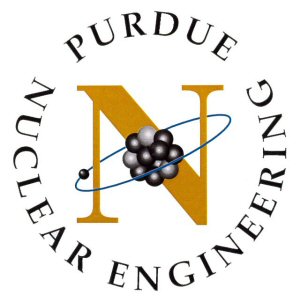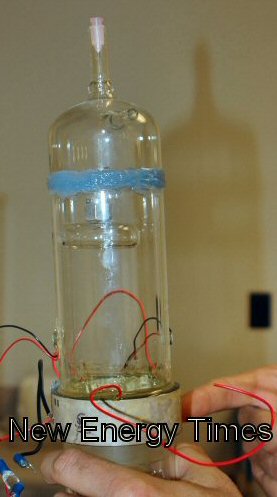Federal Investigations Reveal Academic Backstabbing at Purdue University (Part 1)

Jan. 20, 2014 – By Steven B. Krivit –
Summary
Physics is a contact sport, as the saying goes, and Rusi Taleyarkhan, a professor in the Purdue University School of Nuclear Engineering, learned that the hard way.
His scientific research, if it is ever independently replicated, may lead to a clean-energy technology. But his nascent research efforts have been scuttled.
Despite several years of peer-reviewed, published research which was funded by the departments of Energy and Defense, despite two onsite inspections by independent scientists of his and his team’s work that verified the data, his research has been stopped, he has been accused of fraud, and his reputation has been seriously harmed.
Taleyarkhan contributed to the conflict in three ways. First, although he responded to his critics convincingly in scientific journals, he failed to proactively respond to his critics and their often-incorrect and damaging statements in the popular media. He waited until the last possible day to file a defamation lawsuit. He also claimed that two students at Purdue had independently replicated his experiment, an opinion that only he and his co-authors share.
Through multiple Freedom of Information Act requests, New Energy Times has obtained inter-university correspondence and documents from federal investigations revealing that academic peers and competitors of Taleyarkhan’s conspired with a journalist to attack his reputation and shut down his federally funded research. Eugenie Reich, a freelance journalist writing for the news service of the journal Nature, was eager to expose Taleyarkhan as a fraud.
Despite several years of investigations, no evidence of fraud was found. Meanwhile, some of his accusers — his fellow scientists — in their own federally funded research, manipulated and withheld their own positive confirmatory data, misled the media, and misled federal investigators to advance their own agendas. For his competitors, federal research money, prestige and reputations were at stake. For the head of the Purdue School of Nuclear Engineering, political control of the school was at stake.

Acoustic chamber similar to that used by the Taleyarkhan group at Oak Ridge National Laboratory in its nuclear cavitation experiments
In 2001, Taleyarkhan and his group in the Engineering Technology Division at Oak Ridge National Laboratory in Tennessee tried to experimentally demonstrate and confirm the long-predicted phenomenon of nuclear reactions in cavitating liquids. They succeeded, and Taleyarkhan has said that their research may lead to a new source of clean, carbon-free energy. The research has been called sonofusion or bubble fusion.
Within a decade, Taleyarkhan and his colleagues faced three major battles in the process of performing and communicating their research. The first took place at the Oak Ridge between 2001 and 2002. The second was a series of incidents that took place at Purdue between 2003 and 2006. The third involved conflicts from 2004 to 2006 between the Taleyarkhan group and a professor at the University of California, Los Angeles, who teamed with another professor, from the University of Illinois.
In 2003, Taleyarkhan was recruited to Purdue by Lefteri Tsoukalas, at the time the head of the School of Nuclear Engineering. Tsoukalas wrote in an e-mail that he thought Taleyarkhan was Nobel-prize material. Their working relationship at the school imploded two years later when Taleyarkhan questioned and challenged the corruption he found there under Tsoukalas.
A turning point occurred on March 8, 2006, when Reich launched a series of articles in Nature, with Tsoukalas’ help, that depicted Taleyarkhan as a fraud. Within 24 hours, the story was everywhere, and the court of public opinion sided with Reich. Overnight, Taleyarkhan’s reputation was tainted by accusations of fraud.
At the time, Reich was working on a book about a science fraud. Had she been correct about Taleyarkhan, her news story might have become a great follow-up book and a major career achievement. A month before her first set of articles published in Nature, she told a competitor of Taleyarkhan’s that she intended to write a news story that would cause an investigation of Taleyarkhan. It did.
Reich had worked closely with Tsoukalas as well as two academic competitors of Taleyarkhan’s: physicist Seth Putterman at the University of California, Los Angeles, and chemist Kenneth Suslick at the University of Illinois. After the news broke, Reich, Putterman and Suslick each sent accusations to Purdue administrators that Taleyarkhan had committed science research misconduct and fraud.
One week after Reich published her insinuations of fraud against Taleyarkhan in Nature‘s news service, she submitted her accusations against Taleyarkhan to a Purdue examination committee that was launched in response to her news stories. Not only did Reich intend to cause an investigation of Taleyarkhan, she became one of his accusers.
Following the initial Purdue investigation in 2006, no fraud accusations were substantiated, and Taleyarkhan was exonerated of all charges.
The following year, after the Purdue committee found no fraud, and while Reich was still actively reporting on the topic, she submitted allegations and insinuations of research misconduct and fraud against Taleyarkhan again, this time to the federal government.

Eugenie Samuel Reich
Tsoukalas, Putterman and Suslick also didn’t give up, and they joined her. Each of them sent their accusations to the federal government. This time, they got results. The Office of Naval Research and the House Committee on Science and Technology’s Subcommittee on Investigations and Oversight, which relied heavily on Reich’s articles, put pressure on Purdue to investigate Taleyarkhan a second time.
Congressman Brad Miller, the chair of the subcommittee, told the president of Purdue that the university did not do a thorough investigation of Taleyarkhan the first time and that institutions receiving federal funds needed effective enforcement of their research integrity policies.
With future federal government grant awards and contracts in jeopardy, and the federal government eager to see Purdue find someone guilty of science research misconduct, Purdue took another approach. It investigated Taleyarkhan a second time — for the same charges — and its research integrity committee created and adjudicated its own allegations of research misconduct.
The only actions that Purdue University ever confirmed were that a) Taleyarkhan encouraged and/or asked a Purdue graduate student to work with a Purdue post-graduate researcher to cross-check data and that b) once that paper published, Taleyarkhan expressed his opinion that the two students had independently confirmed his and his co-authors’ claim. The investigation did not find that Taleyarkhan was involved in running the experiments, though he helped design and set up the acoustic test cell. He may also have helped post-doctoral researcher Yiban Xu, for whom English is not his first language, edit the manuscript, according to a statement from Xu. Purdue’s investigation committee, guided by an outside law firm, cast these actions, coupled with Taleyarkhan’s claim of independent replication, as research misconduct.
With Reich’s articles and the pressure from the government, the conflict soon became a public spectacle to which Purdue needed to appear responsive. Despite the university’s written policy of maintaining confidentiality and protecting the rights and reputations of its professors and despite the university’s ideal of fairness, Purdue ignored both on July 18, 2008. On that day, Purdue issued a press release, saying that Taleyarkhan was found guilty of the two research misconduct charges, and it published the full investigation report. Purdue did not question the validity of any of the scientific data or results.
Purdue removed Taleyarkhan’s endowed professorship, reduced his salary, and limited his duties with students.
Yet no fraud accusations were ever substantiated.
In response to investigations by New Energy Times, three federal offices — the Naval Criminal Investigation Service, the Department of Defense Inspector General’s office and the Naval Inspector General’s office — conducted their own investigations.
We report today, for the first time, that documents obtained in the course of several years of investigation by New Energy Times from the federal government in response to FOIA requests show that Holly Adams, the inspector general of the U.S. Office of Naval Research, inappropriately collaborated with the complainant who initiated the second round of investigations against Taleyarkhan. The complainant was Tsoukalas, Taleyarkhan’s supervisor.
Before the federal investigations took place, Purdue had forced Tsoukalas to resign as the head of the School of Nuclear Engineering but did not publicly announce the demotion. The Department of Defense put Adams on administrative leave and later reassigned her.
In July 2013, New Energy Times published an investigation that reported on the Oak Ridge conflict, the first major battle that Taleyarkhan faced. A brief summary of that investigation is included in this report. The detailed reports of the second and third battles are still to come. Today, however, we provide an overview of the full picture of the related conflicts and events.
To help readers follow the 62 sources who are mentioned in this story, Appendix A provides a complete list of their names, photos, and affiliations. Appendix A is also available as a stand-alone Web document. Another useful resource, available only online, is the “Bubblegate Master Timeline,” which contains a chronological listing of all major events and is hyperlinked to many original source documents.
__________________________________ NEXT PAGE

